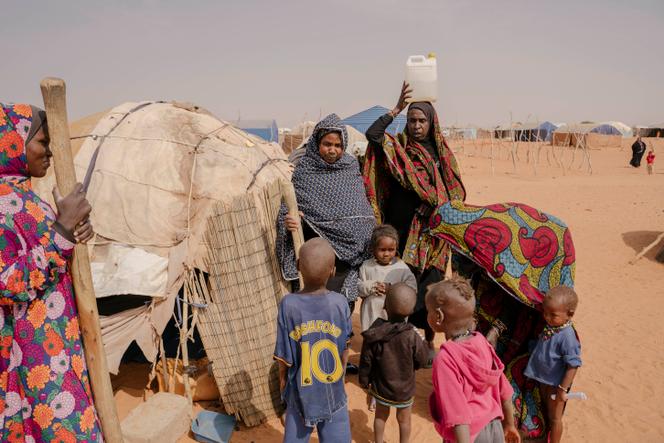Mbera Refugee Camp: A Miniature Mali in Mauritania’s Remote Desert

Every other day, just before dawn breaks and the Mauritanian desert air turns scorching, an 80-year-old Malian refugee named Thiaye wraps a white scarf around his head and sets off on a ten-kilometer trek. Walking at a surprisingly brisk pace, the retired mathematics teacher navigates the sandy lanes of the Mbera refugee camp, located more than 1,200 kilometers east of the capital, Nouakchott.
Through the dark lenses of his sunglasses, row upon row of tin shacks and UNHCR-branded tents drift past. The camp, originally designed to offer temporary refuge, has swelled beyond its planned capacity. “Over there,” Thiaye notes, “the new arrivals have made the edges of the camp feel cramped.” He gestures toward a recently developed area, its makeshift shelters crowding what was once open desert. “We call this new neighborhood ‘Wagner’,” he says, referring to the displaced people who fled atrocities committed by the Malian army and its Russian allies.
A Surge in Displacement
Between 2022 and 2025, the number of Malians seeking safety in Mauritania more than doubled, according to the UNHCR. Official figures jumped from 70,000 to 160,000, though the Mauritanian government estimates the real number is closer to 245,000—not all of whom have been granted formal refugee status. The majority have settled in the Hodh Ech-Chargui region, one of the poorest areas in Mauritania, near or inside the Mbera camp.
What was once a remote outpost has now effectively become a miniature Mali, a stark reflection of the ongoing conflict and instability plaguing its neighbor. But what does it mean when an entire community is replicated in exile? How does a country cope with a sudden demographic shift in one of its most marginalized regions?
Life in the “Wagner” Quarter
The nickname “Wagner” is more than just a label—it’s a narrative. Those living in this newer section of the camp share harrowing accounts of violence, arbitrary detention, and forced disappearances linked to Malian forces and foreign military personnel. Their stories are consistent and chilling.
One resident, Aïssata K., a 40-year-old woman from central Mali, recalls the night armed men—whom she describes as “white”—forced their way into her home. “They were looking for my husband,” she says. “When they didn’t find him, they threatened to burn the house down with us inside.” She fled with her children that same night, joining a growing stream of displaced people heading toward Mauritania.
Her experience is far from unique. Dozens of interviews with recent arrivals reveal a pattern of targeted violence, particularly in regions where Islamist insurgents and state-backed forces are locked in a brutal struggle for control.
Strain on Local Resources
While the international humanitarian response has been significant, local resources are stretched thin. The Hodh Ech-Chargui region was already grappling with poverty, limited access to water, and food insecurity. The arrival of tens of thousands of additional people has placed enormous pressure on host communities and aid agencies alike.
Water shortages are frequent. Medical facilities, though supported by NGOs, are overwhelmed. Schools operate in shifts to accommodate both local and refugee children. And while the spirit of solidarity remains strong, tensions occasionally flare over access to scarce resources.
International Response and Local Realities
The Mauritanian government has maintained a generally welcoming stance toward Malian refugees, even as it faces its own economic and security challenges. Yet the sheer scale of the influx has prompted difficult questions about long-term integration, funding, and regional stability.
European Union migration policies have also indirectly influenced the situation. Eager to curb irregular migration toward its shores, the EU has increased funding for border management and migrant reception centers in Mauritania. Some critics argue this has led to a rise in expulsions and a more restrictive environment for migrants without refugee status.
Meanwhile, life in Mbera continues. Every morning, people like Thiaye walk through the camp—not just as residents, but as witnesses. They see the expansion, they hear the stories, and they understand that the camp is more than a temporary shelter. It is a testament to a conflict that shows no sign of ending, and a symbol of resilience in the face of unimaginable loss.
Looking Ahead
As the sun sets over the desert, the temperature drops, and the camp grows quieter. But beneath the surface, anxiety persists. Will there be enough food when the next shipment arrives? How long before the next wave of violence sends more families across the border? And what happens if the world’s attention shifts elsewhere?
For now, Mbera remains a place of waiting—a city of exile where the lines between temporary and permanent grow increasingly blurred. It is a reminder that behind every statistic is a human story, and behind every policy decision, a human consequence.


